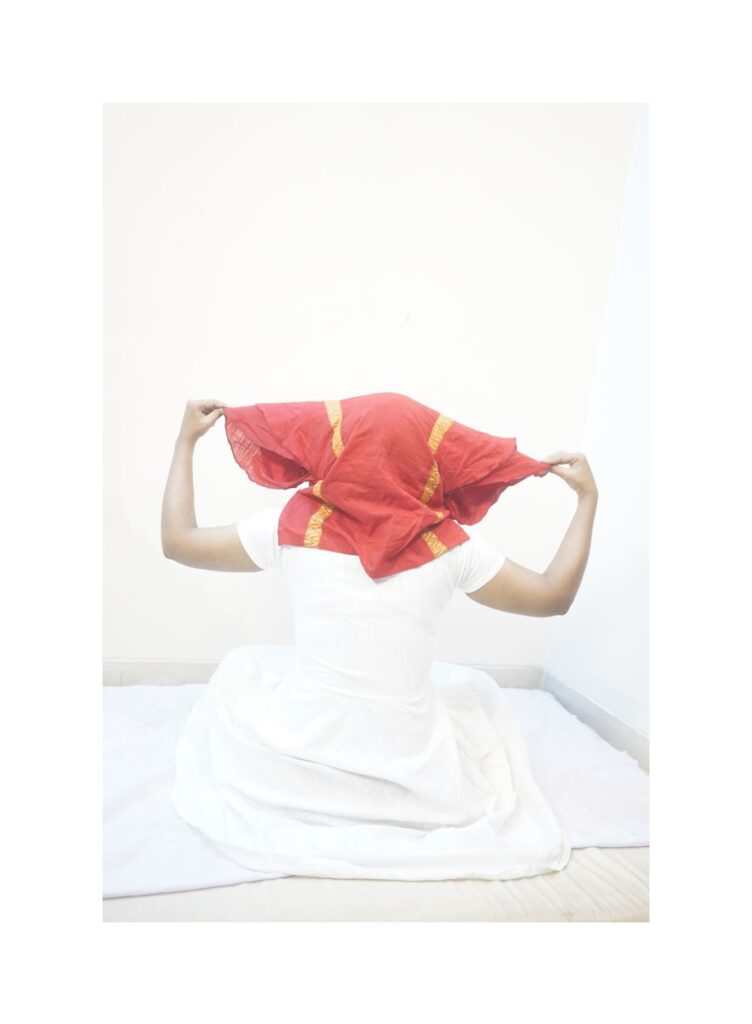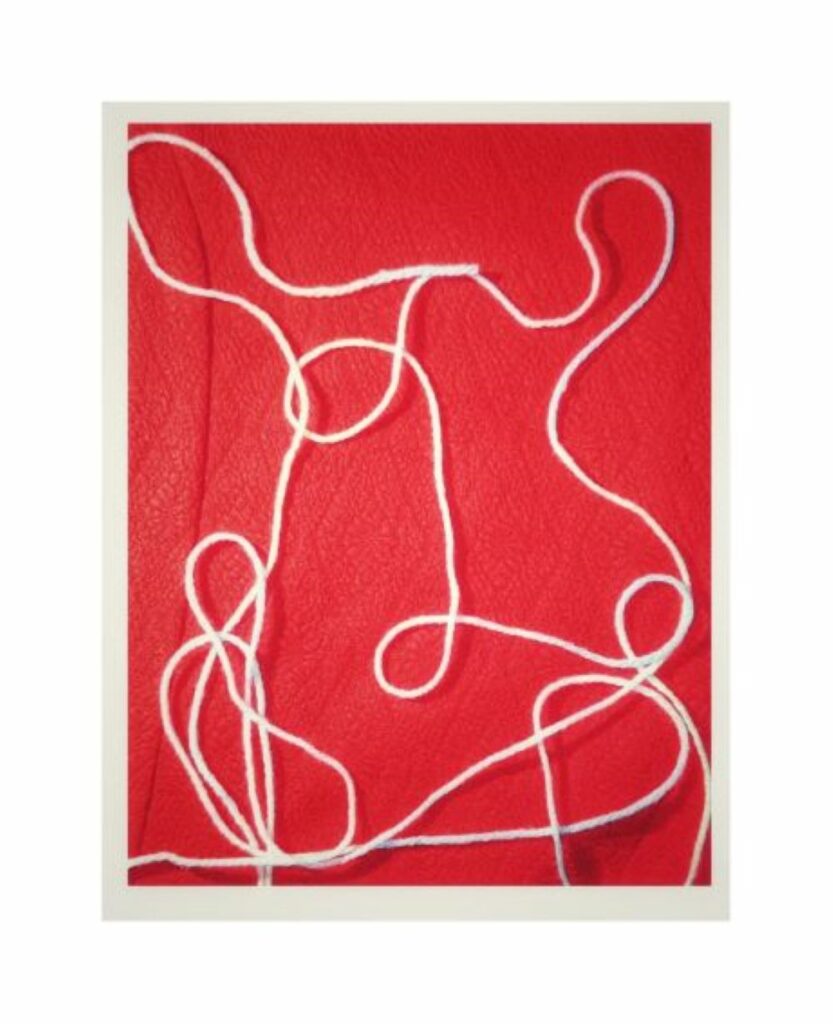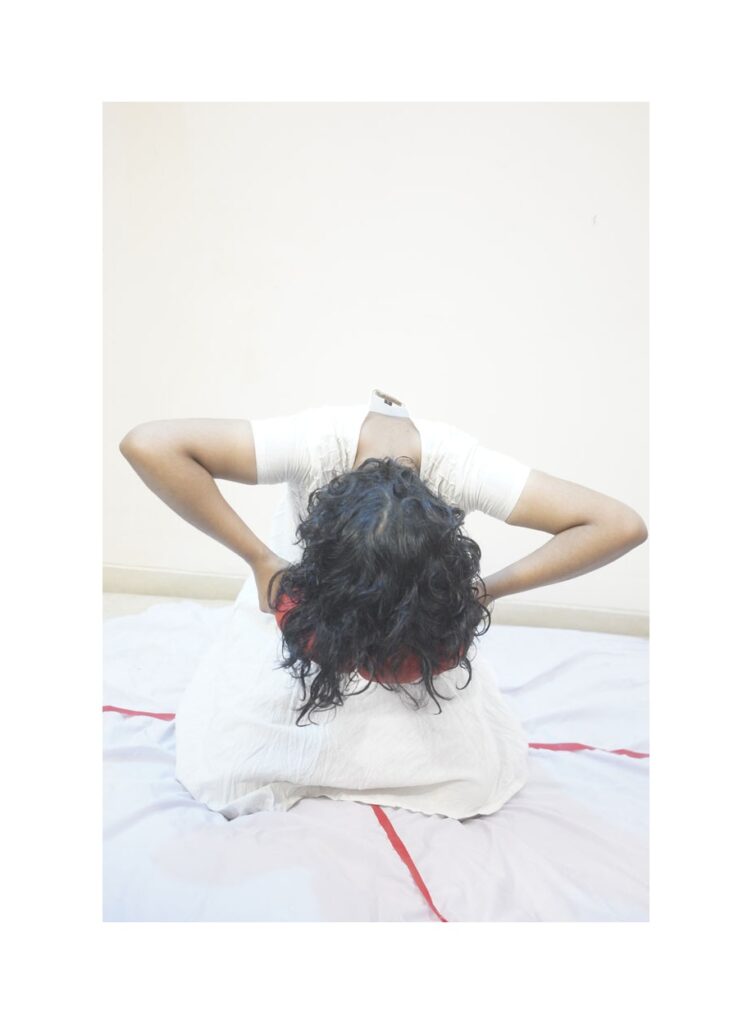


I have used self-portrait-as-a-medium to explore social and gendered dimensions that make the in/visible devastating effect of everyday violence. Among those, I wanted to draw attention to confinement and control that can eventually lead to death often through the border-or-beyond-border exerted upon women’s bodies.
The white spaces in my piece represent the invisible spaces, and the red symbolizes the soul of women who continuously strive to escape violence. The production of the modern border has fictitious tactics designed to kill people, not only through technology and surveillance but also by making every day geographic locations “as carceral spaces of potential graveyards”. My artwork reflects on the everyday torture of the border, which is not only bound to a specific location but also reveals its existence by exposing stateless women to death by gendering them.
The heart of my piece is conveying the critique which to think about the “limit-of-constructions of “bare life” by Agamben without considering the “social vulnerability” and “gendered notions” that contribute to the devaluing of women’s life, exposing them to death. Reflecting on the critique of the “bare life” construction in the Rohingya context, I have used high-key photography to represent the invisibility of details of quotidian Rohingya women’s suffering; from the trauma and violence they encounter daily perpetuated by the sovereign state and the other forces on which the state relies to create “gendered bare life”. Through my work, I want to ask, can a combination of art and Anthropology of Migration encourage us to resist these horrendous atrocities of the so-called “modern era”? The discomfort and ambiguities of representing the “vulnerabilities of those women” exist here with me; my aim is to express them through my silence, which represent the distress in my feminist as well as a powerful language.